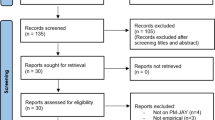Abstract
Background Over the last few years, pharmacists in China have been searching for effective strategies to expand their roles in pharmaceutical care. In September 2012, the Beijing Chaoyang Hospital was the first in China to establish the Chief-Pharmacist System aimed to let pharmacists be a responsible part of the multi-disciplinary care team. Objective To describe the Chief-Pharmacist System and explore its impact on drug expenditures and rational drug use. Setting A tertiary hospital in Beijing, China. Method Chief-Pharmacist System oriented specific measures were implemented and evaluated. Data on medical services quantity, quality and drug expenses during the periods of pre-implementation (from September 1, 2011 to August 31, 2012) and post implementation (from September 1, 2012 to August 31, 2016) were collected. Main outcome measure Healthcare quality indicators, drug expenditures, selected drug use indicators of outpatient and antibiotic use. Results With the implementation of the Chief-Pharmacist System and the participation of pharmacists in pharmaceutical care, drug expenses were reduced significantly. The total drug expenses, outpatient drug expenses per visit and inpatient drug expenses per admission decreased by an average of US $34.3 million, US $8.9 and US $ 303.9, respectively, compared to the pre-implementation period. Meanwhile, selected drug use indicators in post-implementation period were significantly improved. All results were achieved without sacrificing clinical quality and quantity. Conclusion The study illustrates that the Chief-Pharmacist System achieves substantial reductions in drug expenditures and promotion of rational drug use. It provides a model for other hospitals in China and other low- and middle-income countries.
Similar content being viewed by others
References
He Y, Dou G, Huang Q, Zhang X, Ye Y, Qian M, et al. Does the leading pharmaceutical reform in China really solve the issue of overly expensive healthcare services? Evidence from an empirical study. PLoS ONE. 2018;13:e0190320.
Promoting rational use of medicines: core components. World Health Organization; 2002. http://apps.who.int/medicinedocs/pdf/h3011e/h3011e.pdf. Accessed 08 Aug 2018.
Fu H, Li L, Li M, Yang C, Hsiao W. An evaluation of systemic reforms of public hospitals: the Sanming model in China. Health Policy Plan. 2017;32:1135–45.
Doucette WR, Nevins JC, Gaither C, Kreling DH, Mott DA, Pedersen CA, et al. Organizational factors influencing pharmacy practice change. Res Social Adm Pharm. 2012;8:274–84.
Tian W, Yuan J, Yang D, Zhang L. Descriptive analysis on the impacts of universal zero-markup drug policy on a chinese urban tertiary hospital. PLoS ONE. 2016;11:e0162795.
Khdour MR, Kidney JC, Smyth BM, McElnay JC. Clinical pharmacy-led disease and medicine management programme for patients with COPD. Br J Clin Pharmacol. 2009;68:588–98.
Bond CA, Raehl CL, Patry R. Evidence-based core clinical pharmacy services in United States hospitals in 2020: services and staffing. Pharmacotherapy. 2004;24:427–40.
Dalton K, Byrne S. Role of the pharmacist in reducing healthcare costs: current insights. Integr Pharm Res Pract. 2017;6:37–46.
Siaw MYL, Ko Y, Malone DC, Tsou KYK, Lew YJ, Foo D, et al. Impact of pharmacist-involved collaborative care on the clinical, humanistic and cost outcomes of high-risk patients with type 2 diabetes (IMPACT): a randomized controlled trial. J Clin Pharm Ther. 2017;42:475–82.
Houle SK, Chuck AW, McAlister FA, Tsuyuki RT. Effect of a pharmacist-managed hypertension program on health system costs: an evaluation of the study of cardiovascular risk intervention by pharmacists-hypertension (SCRIP-HTN). Pharmacotherapy. 2012;32:527–37.
Zhou Y, Ma LY, Zhao X, Tian SH, Sun LY, Cui YM. Impact of pharmacist intervention on antibiotic use and prophylactic antibiotic use in urology clean operations. J Clin Pharm Ther. 2015;40:404–8.
Caffiero N, Delate T, Ehizuelen MD, Vogel K. Effectiveness of a clinical pharmacist medication therapy management program in discontinuation of drugs to avoid in the elderly. J Manag Care Spec Pharm. 2017;23:525–31.
Katoue MG, Ker J. Implementing the medicines reconciliation tool in practice: challenges and opportunities for pharmacists in Kuwait. Health Policy. 2018;122:404–11.
Doloresco F, Vermeulen LC. Global survey of hospital pharmacy practice. Am J Health Syst Pharm. 2009;66:S13–9.
Anderson S. The state of the world’s pharmacy: a portrait of the pharmacy profession. J Interprof Care. 2002;16:391–404.
Hepler CD, Strand LM. Opportunities and responsibilities in pharmaceutical care. Am J Hosp Pharm. 1990;47(3):533–43.
How to investigate drug use in health facilities: selected drug use indicators. World Health Organization; 1993. http://apps.who.int/medicinedocs/pdf/s2289e/s2289e.pdf. Accessed 08 Aug 2018.
ATC/DDD Index 2019. WHO Collaborating Centre for Drug Statistics Methodology. 2019. https://www.whocc.no/atc_ddd_index/. Accessed 01 Aug 2019.
Dong L, Yan H, Wang D. Drug prescribing indicators in village health clinics across 10 provinces of Western China. Fam Pract. 2011;28:63–7.
Li Y, Xu J, Wang F, Wang B, Liu L, Hou W, et al. Overprescribing in China, driven by financial incentives, results in very high use of antibiotics, injections, and corticosteroids. Heaalth Aff (Millwood). 2012;31:1075–82.
Zhang HH, Du Y, Liu W, Song SD, Zhao W, Huang GW, et al. Effectiveness of antibiotic use management in Tianjin (2011–2013): a quasi-experimental study. Med Sci Monit. 2017;23:725–31.
Clinical Pharmacy Branch of Chinese Medical Association. Expert consensus on chief pharmacist system of China (2018). Chin J Hosp Adm. 2018;34:793–6.
Yang Z, Fan D. How to solve the crisis behind Bribegate for Chinese doctors. The Lancet. 2012;379:e13–5.
Acknowledgements
We would like to thank all pharmacists engaged in this pharmaceutical reform. We appreciate the supports from directors, doctors and nurses of our hospital.
Funding
The Project was supported by the Former National Health and Family Planning Commission Drug Policy and Basic Drug Department, No〔2016〕43
Author information
Authors and Affiliations
Corresponding author
Ethics declarations
Conflicts of interest
Authors declare that they have no conflicts of interests.
Additional information
Publisher's Note
Springer Nature remains neutral with regard to jurisdictional claims in published maps and institutional affiliations.
Rights and permissions
About this article
Cite this article
Ma, Z., Zhao, Z., Sun, S. et al. Impact of ‘Chief-Pharmacist System’ on drug expenditures and rational drug use. Int J Clin Pharm 42, 167–173 (2020). https://doi.org/10.1007/s11096-019-00954-9
Received:
Accepted:
Published:
Issue Date:
DOI: https://doi.org/10.1007/s11096-019-00954-9




